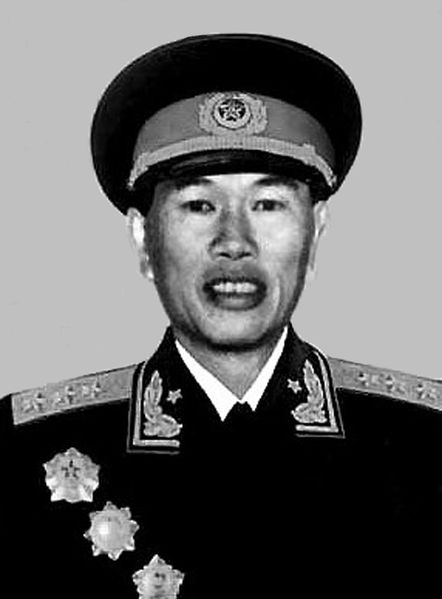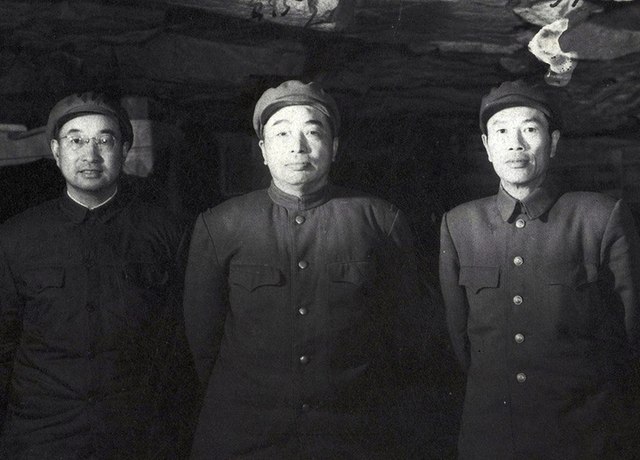Battle of Chosin Reservoir
The Battle of Chosin Reservoir, also known as the Chosin Reservoir Campaign or the Battle of Lake Changjin, was an important battle in the Korean War. The name "Chosin" is derived from the Japanese pronunciation "Chōshin", instead of the Korean pronunciation.
A column of the US 1st Marine Division moves through Chinese lines during its breakout from the Chosin Reservoir with a M46 Patton medium tank.
Song Shilun (middle), commander of the People's Volunteer Army 9th Army at Chosin Reservoir
Soldiers from the Chinese 79th Division moving to engage the Marines at Yudam-ni
Marines engaging the Chinese
The People's Volunteer Army (PVA), officially the Chinese People's Volunteers (CPV), was the armed expeditionary forces deployed by the People's Republic of China during the Korean War. Although all units in the PVA were actually transferred from the People's Liberation Army under the orders of Chairman Mao Zedong, the PVA was separately constituted in order to prevent an official war with the United States. The PVA entered Korea on 19 October 1950 and completely withdrew by October 1958. The nominal commander and political commissar of the PVA was Peng Dehuai before the ceasefire agreement in 1953, although both Chen Geng and Deng Hua served as the acting commander and commissar after April 1952 following Peng's illness. The initial units in the PVA included 38th, 39th, 40th, 42nd, 50th, 66th Corps; totalling 250,000 men. About 3 million Chinese civilian and military personnel had served in Korea throughout the war.
First commander and commissar of the PVA Peng Dehuai (1950–1952)
Second commander and commissar of the PVA Chen Geng (1952)
Third commander and commissar of the PVA Deng Hua (1952–1953)
Three commanders of the PVA during the Korean War. From left to right: Chen Geng (1952); Peng Dehuai (1950–1952); and Deng Hua (1952–1953).








